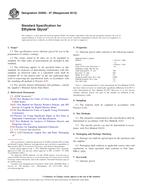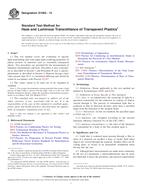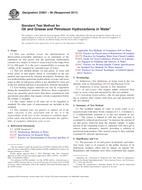1.1 This practice pertains to the analysis and interpretation of fracture mirror sizes in brittle materials. Fracture mirrors (Fig. 1) are telltale fractographic markings that surround a fracture origin in brittle materials. The fracture mirror size may be used with known fracture mirror constants to estimate the stress in a fractured component. Alternatively, the fracture mirror size may be used in conjunction with known stresses in test specimens to calculate fracture mirror constants. The practice is applicable to glasses and polycrystalline ceramic laboratory test specimens as well as fractured components. The analysis and interpretation procedures for glasses and ceramics are similar, but they are not identical. Different optical microscopy examination techniques are listed and described, including observation angles, illumination methods, appropriate magnification, and measurement protocols. Guidance is given for calculating a fracture mirror constant and for interpreting the fracture mirror size and shape for both circular and noncircular mirrors including stress gradients, geometrical effects, and/or residual stresses. The practice provides figures and micrographs illustrating the different types of features commonly observed in and measurement techniques used for the fracture mirrors of glasses and polycrystalline ceramics.
Note 1: The initial flaw may grow stably to size ac prior to unstable fracture when the stress intensity reaches KIc. The mirror-mist radius is Ri, the mist-hackle radius is Ro, and the branching distance is Rb. These transitions correspond to the mirror constants, Ai, Ao, and Ab, respectively.
Product Details
- Published:
- 07/01/2015
- Number of Pages:
- 16
- File Size:
- 1 file , 880 KB


